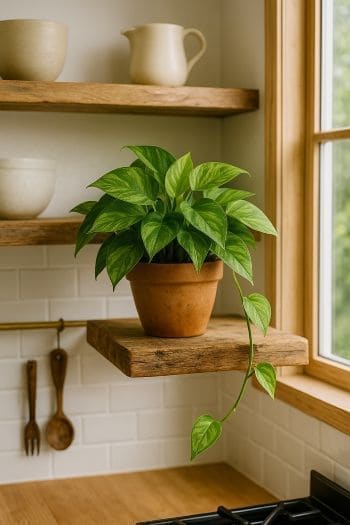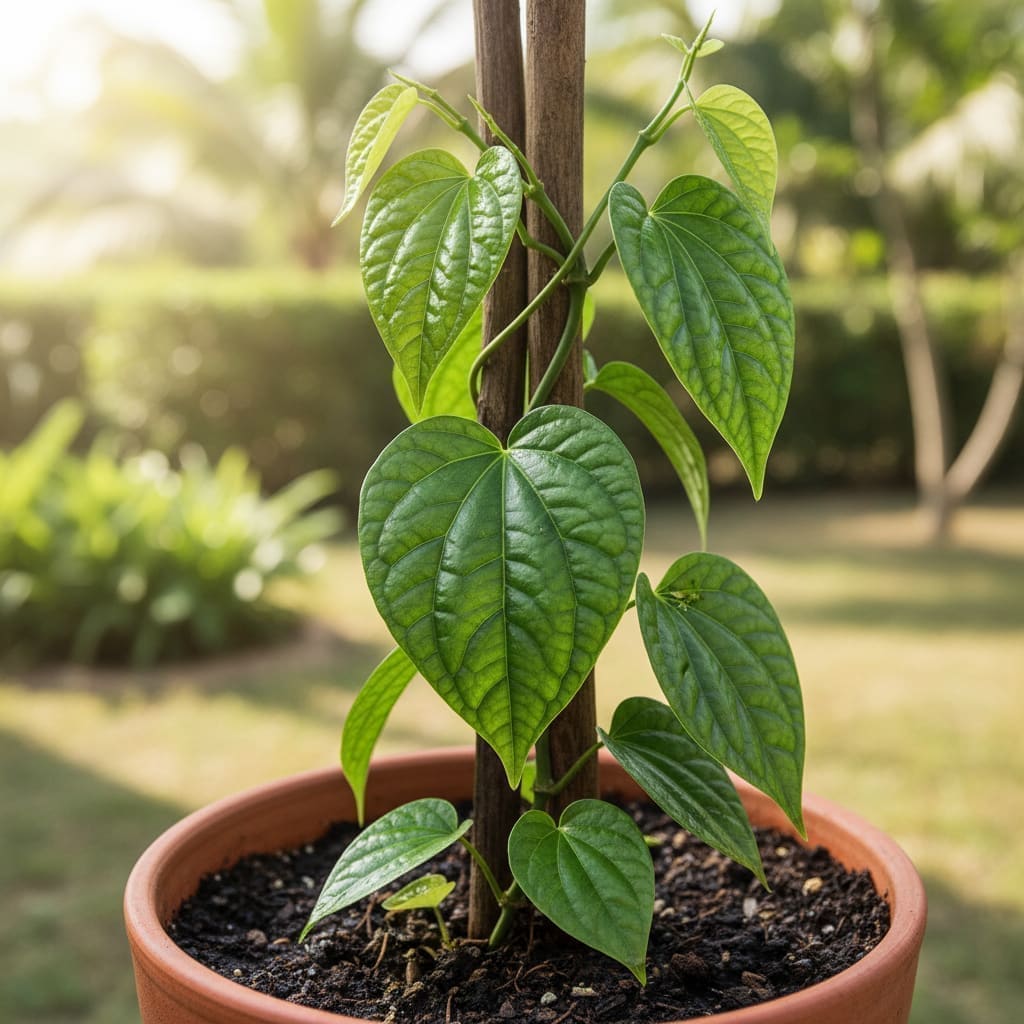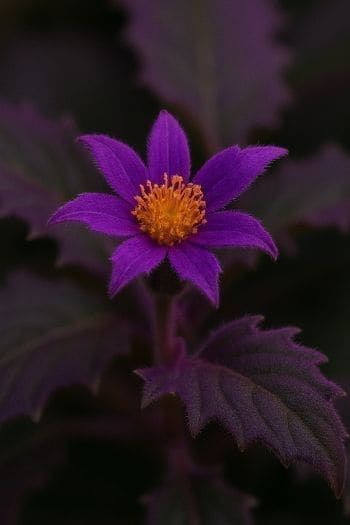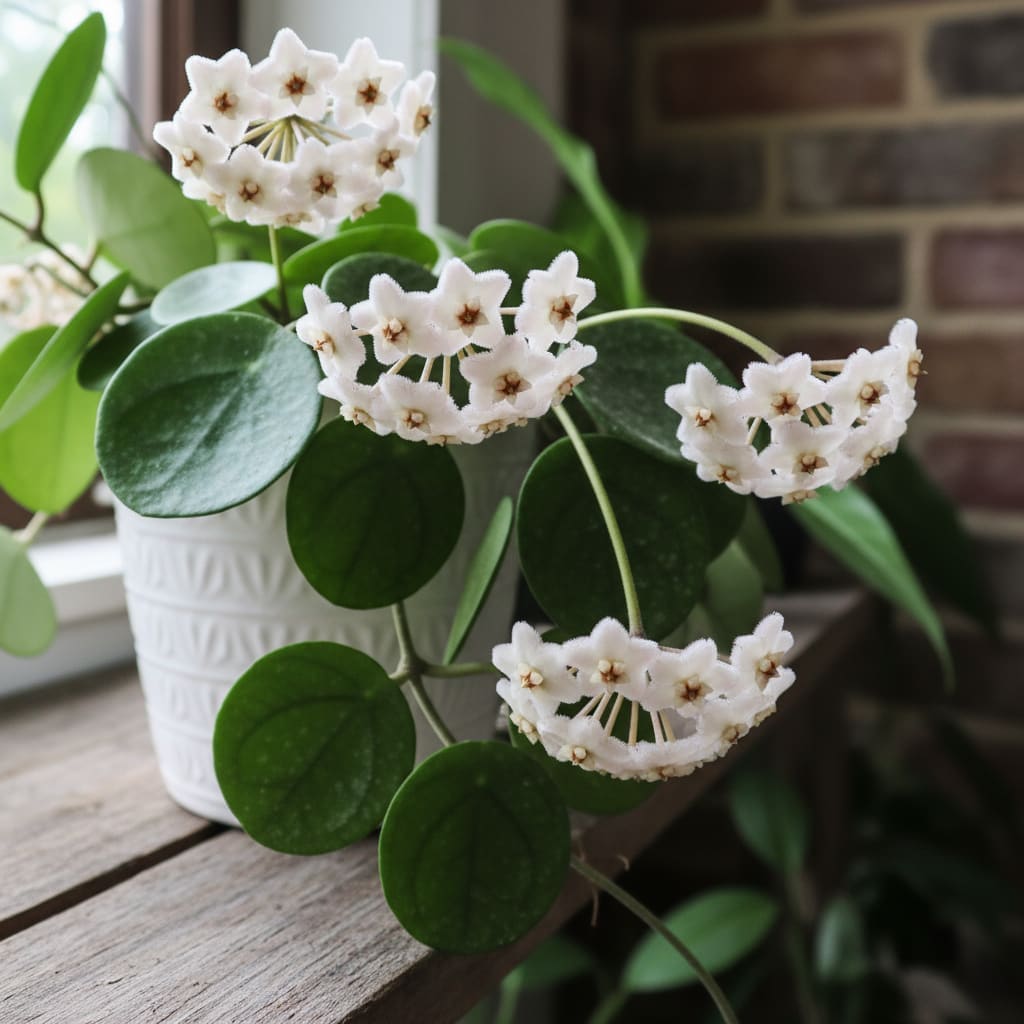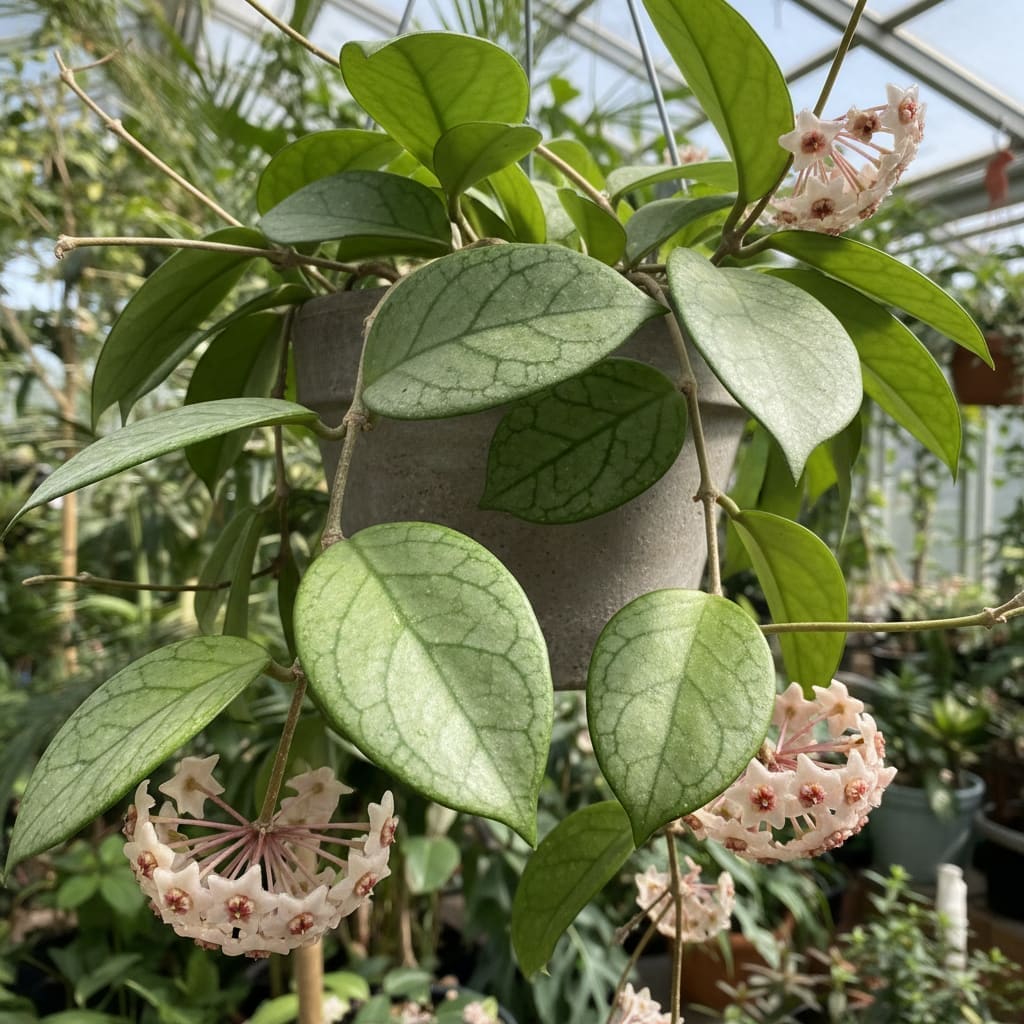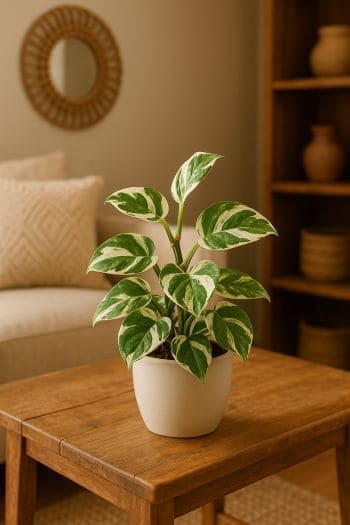Jessenia Pothos (Epipremnum aureum ‘Jessenia’) Care Guide
Overview
The Jessenia Pothos (Epipremnum aureum ‘Jessenia’) is a striking cultivar of the popular pothos plant, prized for its heart-shaped leaves marbled with lime-green and chartreuse variegation. Native to the tropical forests of Southeast Asia, this trailing and climbing plant is both decorative and relatively easy to care for, making it a favorite among indoor gardeners. Its adaptable nature allows it to thrive in a variety of home environments, provided it receives the right balance of light, water, and humidity.
In its natural habitat, the Jessenia Pothos can grow as a groundcover or climb trees as an epiphyte, drawing moisture and nutrients from the air and surrounding organic matter. Indoors, it can be grown in hanging baskets, trained up a moss pole, or allowed to cascade from shelves.
Identification & Growth Habit
The Jessenia Pothos is recognized by its medium to large, heart-shaped leaves with a marbled pattern of green and yellow-green tones. The variegation is softer and more muted than that of the Golden Pothos, giving it a unique, almost watercolor-like appearance.
- Growth habit: Trailing or climbing vine.
- Mature size indoors: Vines can reach 6–10 feet or more with proper care.
- Leaf size: Typically 3–6 inches long indoors; larger in optimal conditions.
Light & Placement
Place your Jessenia Pothos in bright, indirect light to maintain its vibrant variegation. It will tolerate medium light, but prolonged low-light conditions can cause the variegation to fade and growth to slow. Avoid direct sunlight, which can scorch the leaves.
- East- or north-facing windows are ideal.
- In south- or west-facing rooms, position the plant several feet from the window or filter light with sheer curtains.
Watering & Humidity
Water when the top 2–3 inches of soil feel dry to the touch. Always ensure the pot has drainage holes to prevent root rot. Reduce watering frequency in fall and winter when growth slows.
The Jessenia Pothos thrives in humidity levels between 50% and 70%. In dry indoor environments, increase humidity by:
- Using a humidifier nearby.
- Placing the pot on a pebble tray with water (without submerging the base).
- Grouping plants together to create a microclimate.
Soil & Repotting
Use a well-draining potting mix that retains some moisture. A blend of peat moss, perlite, and compost works well. Repot every 1–2 years or when roots begin to circle the pot, ideally in spring.
- Choose a container with adequate drainage holes.
- When repotting, gently loosen root-bound sections to encourage new growth.
Fertilizing
Feed monthly during the growing season (spring and summer) with a balanced liquid fertilizer diluted according to the manufacturer’s instructions. Stop fertilizing in fall and winter to allow the plant to rest.
Pruning & Training
Prune to control length, encourage bushier growth, and remove any damaged or yellowing leaves. Use clean, sharp scissors or pruning shears.
Training Options
- Moss pole: Encourages upward growth and larger leaves.
- Trellis: Supports decorative vertical displays.
- Hanging basket: Allows vines to cascade naturally.
Propagation
Jessenia Pothos is easy to propagate from stem cuttings.
Step-by-Step Propagation
- Select a healthy vine and cut a 4–6 inch section with at least one node and one leaf.
- Remove the leaf closest to the cut end to expose the node.
- Place the cutting in a jar of clean water or directly into moist potting mix.
- If rooting in water, change the water every few days to prevent stagnation.
- Keep in a warm location with bright, indirect light.
- Roots typically develop within 2–4 weeks; transplant water-rooted cuttings into soil once roots are 1–2 inches long.
Common Problems
Pests
- Spider mites: Look for fine webbing and stippled leaves. Treat with insecticidal soap or neem oil.
- Mealybugs: Appear as white, cottony clusters. Remove manually and treat with horticultural oil.
- Scale insects: Brown, shell-like bumps on stems and leaves. Scrape off gently and apply insecticidal treatment.
Diseases
- Root rot: Caused by overwatering and poor drainage. Remove affected roots and repot in fresh, well-draining soil.
- Leaf spot: Brown or black spots may indicate fungal or bacterial infection. Remove affected leaves and improve air circulation.
Toxicity & Pet Safety
The Jessenia Pothos is toxic to cats, dogs, and humans if ingested due to insoluble calcium oxalates. Keep out of reach of pets and children, and handle with care to avoid sap contact with skin or eyes.
Styling & Decor Tips
- Place in a hanging planter to showcase trailing vines.
- Train up a moss pole for a lush, vertical accent.
- Combine with other pothos varieties for a mixed-variegation display.
- Use decorative cachepots to complement leaf colors.
Varieties & Cultivars
While the Jessenia Pothos is a distinct cultivar, it belongs to the same species as other popular varieties such as Golden Pothos, Marble Queen, and Neon Pothos. Each differs in leaf coloration and variegation patterns, but care requirements are similar.
Buying Tips & Maturity
- Choose plants with firm, vibrant leaves and no signs of pests or disease.
- Variegation should be visible and consistent across leaves.
- Expect faster growth in warm months; mature vines can be achieved in a few years with proper care.
Seasonal Care
- Spring/Summer: Active growth period; increase watering frequency, fertilize monthly, and consider repotting if root-bound.
- Fall/Winter: Growth slows; reduce watering and stop fertilizing. Maintain warmth and avoid cold drafts.
FAQ
- How fast does Jessenia Pothos grow? Growth is moderate; in ideal conditions, vines can extend several feet in a year.
- Can it grow in low light? It will survive in low light but variegation may fade and growth will slow.
- Do I need to mist the leaves? Misting can temporarily raise humidity but is less effective than a humidifier or pebble tray.
- When should I repot? Every 1–2 years or when roots circle the pot or grow through drainage holes.
- Is it safe for pets? No, it is toxic if ingested; keep away from pets and children.
